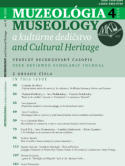How to exhibit a human mummy in a former monastery? The case of the body of Michael Willmann (1630–1706)
How to exhibit a human mummy in a former monastery? The case of the body of Michael Willmann (1630–1706)
Author(s): Andrzej KoziełSubject(s): Christian Theology and Religion, Museology & Heritage Studies, Visual Arts, 17th Century, History of Art
Published by: Univerzita Komenského v Bratislave, Filozofická fakulta
Keywords: Michael Willmann; mummy; the monastery crypt; Lubiąż; Cistercians; exposition;
Summary/Abstract: This paper discusses the mummified body of Michael Willmann (1630–1706) – one of the most outstanding painters of the Baroque period in Central Europe. Willmann’s mummy was preserved in the crypt of the former Cistercian monastery church in Lubiąż, Silesia (Poland). The article presents the history of the mummy and possibilities for opening the crypt and displaying it to the public, following the example of similar expositions in Europe which have found respectful and sensitive solutions for presenting the bodies of the deceased (e.g. Capuchin Crypt in Palermo and Capuchin Church in Brno). Willmann’s mummy is not only the body of an artist, but also a part of the cultural heritage of the Lubiąż Cistercians, making it worthy museification. This issue is particularly important in the context of the plans for establishing the Michael Willmann Museum in the former Cistercian monastery church in Lubiąż.
Journal: Muzeológia a kultúrne dedičstvo
- Issue Year: 8/2020
- Issue No: 4
- Page Range: 95-109
- Page Count: 15
- Language: English

